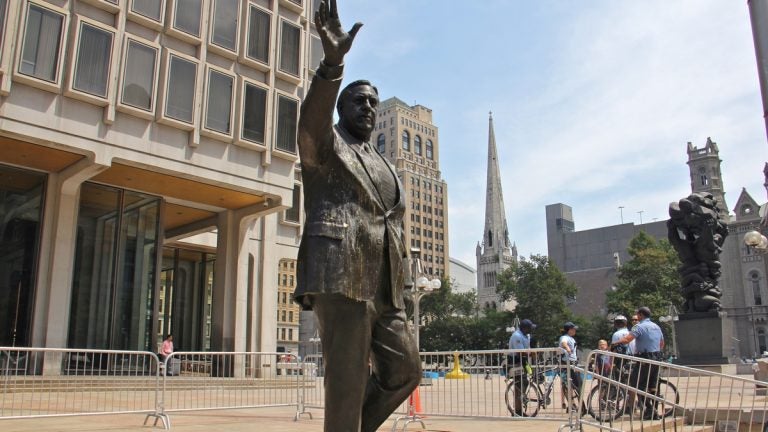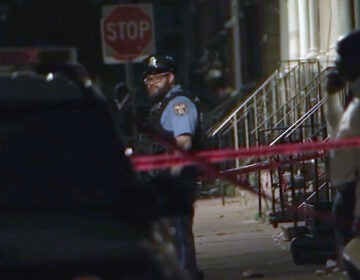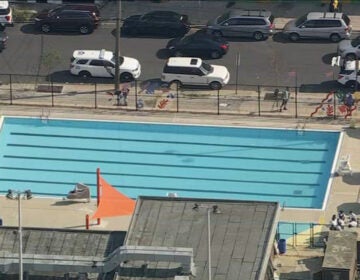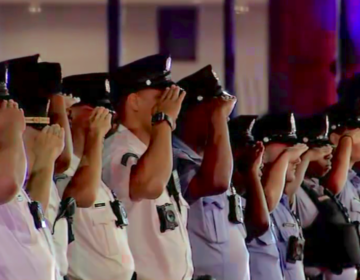Removing Rizzo statue a symbolic gesture; police must make real change
I am at once relieved that the Kenney administration made the right decision, and grieved that removing a symbol of brutality does not change the substance of this moment.
Listen 2:54
Police stand guard at the Frank Rizzo statue on the grounds of the Municipal Services Building. (Emma Lee/WHYY, file)
I thought I’d be happier when I learned that the Kenney administration had decided to remove the statue of former mayor and police commissioner Frank Rizzo from the steps of the Municipal Services Building.
After all, I’d spent more than a year voicing my discomfort with Rizzo’s legacy being celebrated on public property. Last July, I wrote that Rizzo’s statue — which I’ve long viewed as a memorial to police brutality — must not greet delegates when the Democratic National Convention arrived in Philadelphia. Not when the nation was locked in a debate about the killings of unarmed black men at the hands of police. Not when so many survivors of Rizzo’s rough-and-tumble tactics still bore the scars.
But now that the decision has been made to move it, I am at once relieved that the Kenney administration made the right decision, and grieved that removing a symbol of brutality does not change the substance of this moment.
The systemic abuse that Rizzo oversaw was such that the U.S. Justice Department filed a 1979 lawsuit, saying the Philadelphia Police Department’s unfettered use of brutality “shocks the conscience.” But even Rizzo, who directed his police to attack children protesting for black history lessons, and oversaw the stripping of Black Panthers in the street, might not be the worst offender in today’s environment.
That’s because police brutality no longer seems to shock the conscience. Rather, police brutality seems to be the norm, especially where black and brown communities are concerned.
The list of unarmed victims is troubling.
From Michael Brown in Ferguson Missouri, to 12-year-old Tamir Rice in Cleveland, to Eric Garner on Staten Island, New York, and Oscar Grant in San Francisco, the list of names is both familiar and lengthy. And the numbers point to disturbing patterns when it comes to race, gender, and age.
Black people, regardless of gender, are 2.5 times more likely than their white counterparts to be shot and killed by police, according to the Washington Post. Black men in particular, are endangered. Though black men make up only 6 percent of the population, the Post found, we comprise 40 percent of unarmed people who are shot and killed by police. And a ProPublica analysis of federally collected data on fatal police shootings found that young black men are 21 times more likely to be shot and killed by police than their white counterparts.
That is today’s reality. And while I join activists like Asa Khalif, Michael Coard, Faye Anderson, and Councilwoman Helen Gym in celebrating the administration’s decision to remove the Rizzo statue from public property, I am painfully aware of the fact that my people are still dying unjustly at the hands of law enforcement.
I am grieved by the fact that our cries for relief have been met with a demand that we support the same system that is killing us. But in spite of that, I am determined to move beyond this first step in the long hard march toward justice.
Thank you, Mayor Kenney, for choosing to move a symbol of police brutality.
I now invite you to join us in moving the needle.
WHYY is your source for fact-based, in-depth journalism and information. As a nonprofit organization, we rely on financial support from readers like you. Please give today.





